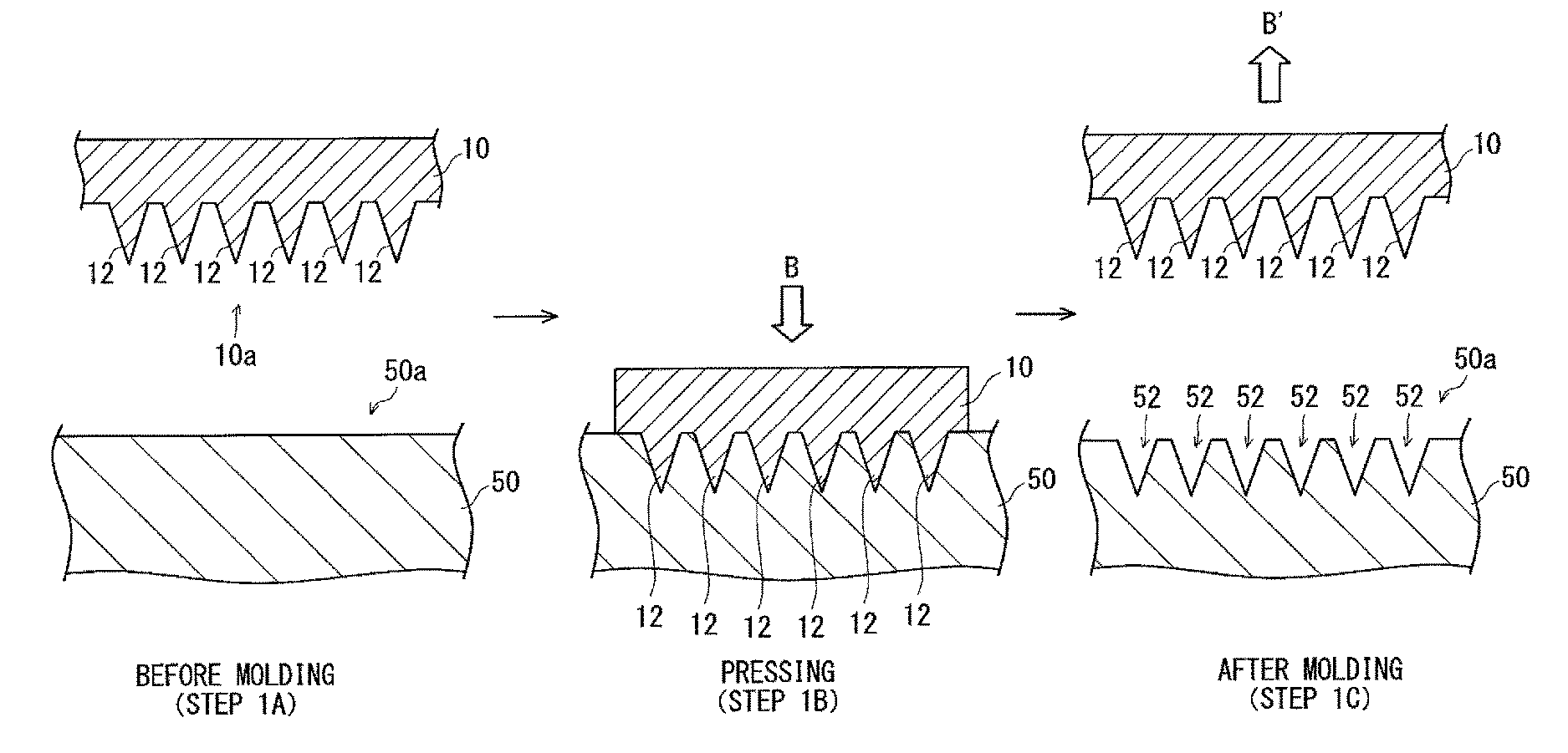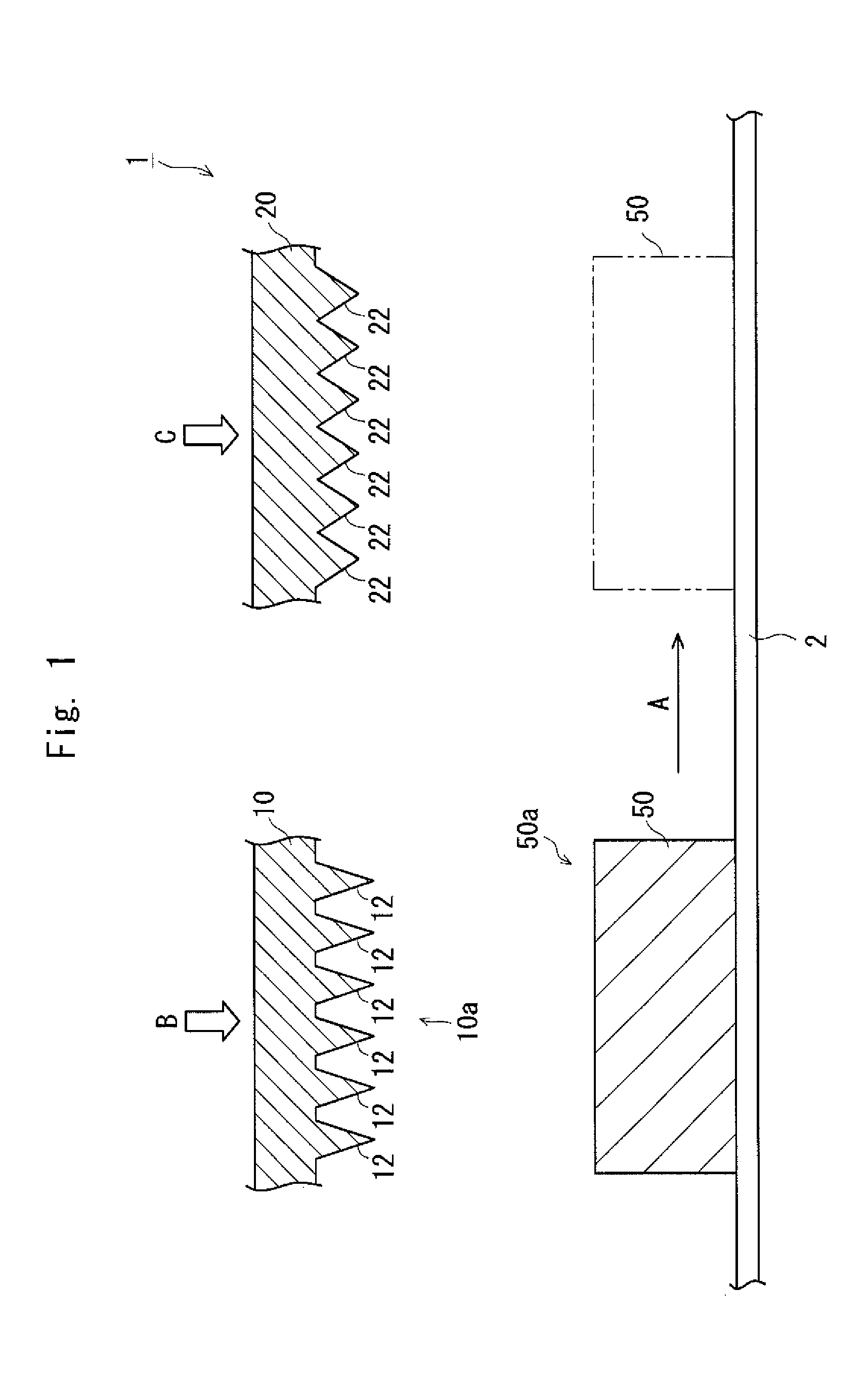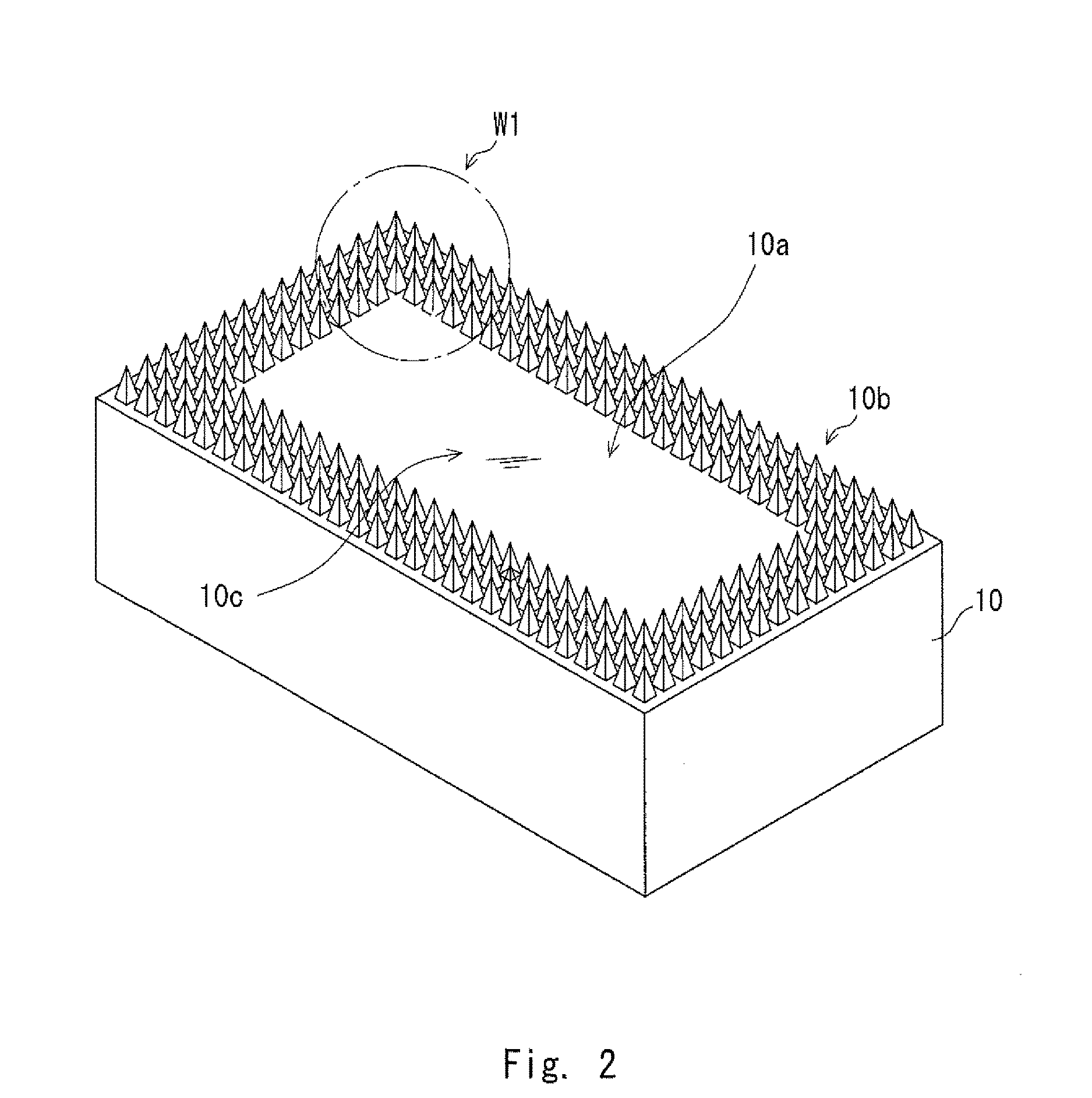Surface roughening apparatus for metal stock and surface roughening method for metal stock
- Summary
- Abstract
- Description
- Claims
- Application Information
AI Technical Summary
Benefits of technology
Problems solved by technology
Method used
Image
Examples
first exemplary embodiment
[0039]Exemplary embodiments will be described below with reference to the drawings. The same elements are denoted by the same reference numerals throughout the drawings, and repeated descriptions thereof are omitted as appropriate.
[0040]FIG. 1 is a diagram showing a surface roughening apparatus 1 according to a first exemplary embodiment. The surface roughening apparatus 1 includes a transport member 2, which transports a metallic material 50 (metal stock), a first mold 10 (first mold), and a second mold 20 (second mold). The transport member 2 transports the metallic material 50 to a location facing the first mold 10. As a result, an opposed surface 10a of the first mold 10 faces a surface 50a (first surface) of the metallic material 50. As indicated by an arrow A, the transport member 2 transports the metallic material 50 to a location facing the second mold 20. As a result, an opposed surface 20a of the second mold 20 faces the surface 50a of the metallic material 50.
[0041]The fi...
second exemplary embodiment
[0069]Next, a second exemplary embodiment will be described. In the second exemplary embodiment, the surface roughening method according to the first exemplary embodiment described above is applied to the formation of a pin-shaped fin (hereinafter referred to as a “pin fin”) which is formed in a cooler used for cooling electronic components and the like. Specifically, in the second exemplary embodiment, surface roughening of a metallic material is performed during the formation of a cooler made of a metallic material.
[0070]FIG. 11 is a diagram showing a method for producing an electronic device 70 according to the second exemplary embodiment. The electronic device 70 includes a plurality of electronic component structures 72. The electronic device 70 has a structure in which the plurality of electronic component structures 72 are joined together in a stacked state. Each electronic component structure 72 includes an electronic component 74, such as a power card, and a cooler 150. Eac...
modified example
[0096]Note that the disclosure is not limited to the exemplary embodiments described above, which can be modified as described below. For example, in the second exemplary embodiment described above, the formation the pin fins 164 and trimming are carried out in the same step as the roughening step. However, the formation of the pin fins 164 and trimming may be carried out in a step different from the roughening step.
[0097]FIG. 19 is a process chart showing an example in which the formation of the pin fins 164 and trimming are carried out in a step different from the roughening step. First, in step S102, the plurality of pin fins 164 are formed in the location corresponding to the pin-fin forming area 162 of the metallic material 50. This step S102 can be performed using the first molding portion 110 shown in FIG. 14 from which the roughening molding portion 10b (protrusions 12) is omitted. Next, in step S104, the outer peripheral portion 170 of the metallic material 50 is cut (trimm...
PUM
| Property | Measurement | Unit |
|---|---|---|
| Angle | aaaaa | aaaaa |
| Shape | aaaaa | aaaaa |
| Height | aaaaa | aaaaa |
Abstract
Description
Claims
Application Information
 Login to View More
Login to View More - R&D
- Intellectual Property
- Life Sciences
- Materials
- Tech Scout
- Unparalleled Data Quality
- Higher Quality Content
- 60% Fewer Hallucinations
Browse by: Latest US Patents, China's latest patents, Technical Efficacy Thesaurus, Application Domain, Technology Topic, Popular Technical Reports.
© 2025 PatSnap. All rights reserved.Legal|Privacy policy|Modern Slavery Act Transparency Statement|Sitemap|About US| Contact US: help@patsnap.com



